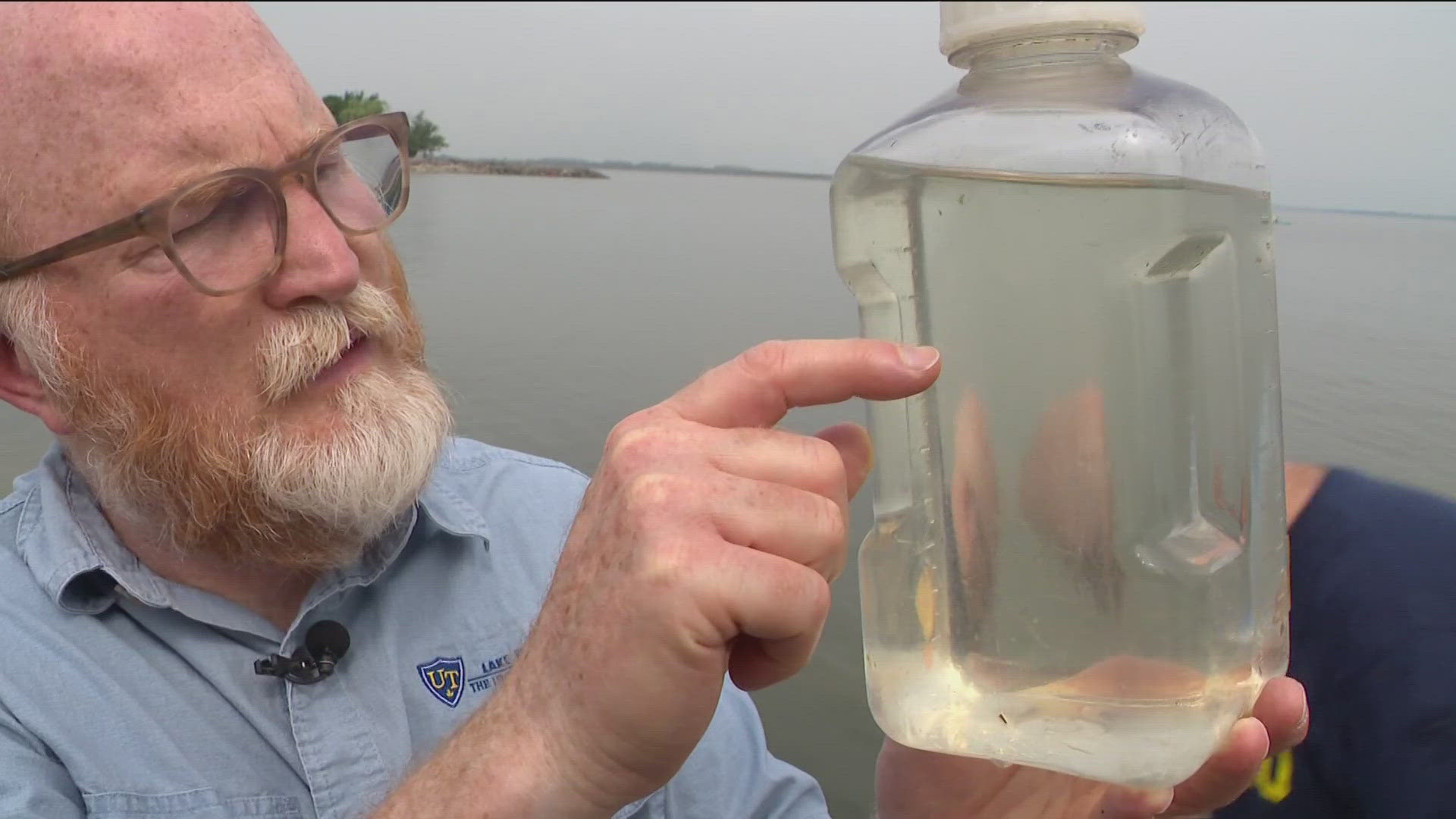TOLEDO, Ohio — The first week of August will mark ten years since Toledo's water crisis, when many were instructed not to drink, cook with, or bathe in the water for three days.
On Aug. 2, 2014, toxic algal bloom that right over the water intake made it unsafe and unleashed years of questions.
Three days after that fateful day in 2014, late Toledo Mayor D. Michael Collins drank a glass of water to signify and celebrate the end of the crisis. He said:
"I'm pretty thirsty right now because it's been a long night. Here's to you Toledo! You did a great job!"
But then the work really began.
There were upgrades at the city's water treatment plant, with a lot of dollars spent to better treat the water and remove microcystin from toxic algal blooms in Lake Erie. There have been millions of dollars pumped into the Great Lakes Restoration Initiative to maintain safe sources of drinking water.
Additionally, efforts to keep Lake Erie clean include the much-publicized H2 Ohio program championed by Governor Mike DeWine since 2019. It's a water quality initiative that is working to reduce harmful algal blooms caused by phosphorous runoff from farm fields and has added more wetlands in Ohio.
But have these efforts really brought change? Some claim the progress that needed to be made hasn't happened yet. Sandy Bihn, a water quality expert who calls herself the "Lake Erie Waterkeeper," is among them.
"I think 10 years is really sad because we haven't made any progress," Bihn said.
She said more needs to be done.
"I think Ohio and the federal government need to update how they address this issue. You have to do whatever you're going to spend the money on, it and it has to reduce the amount of phosphorus coming into the system," she said. "It's that simple. That's what the feds, Canada and Ohio agreed to, a 40% reduction in total phosphorus and something called dissolved phosphorous and we're not doing it."
She thinks local leaders have failed to focus on where the phosphorous is coming from: manure from cows at farms, especially large commercial farms called CAFOS.
"So, if the bad actors [are] the farmers who refuse to stop their runoff, then the government needs to regulate or find a way to get them into the program," Bihn said. "Why keep spending money and spinning wheels and trying to make the public think you're doing it for something for Lake Erie when you really haven't?"
Bihn also says she thinks state and federal leaders have never really answered this question: how much phosphorous runoff has actually been reduced? She believes too many cows, chickens, and other farm animals are concentrated on large farms in the watershed.
But Dr. Tom Bridgeman of the University of Toledo's Lake Erie Center, doesn't see such a bleak outlook for our water, ten years after the crisis.
"The lake is no longer getting worse, Bridgeman said. "It has leveled off at a place that's much, that we don't want, but we have made progress in terms of that the trajectory has evened out, but we still need to get the blooms back down and under control."
Bridgeman pointed to more buoys and monitoring equipment now on the lake that better detect blooms near the water intake. He also applauded the many upgrades to water treatment plants in Toledo and Oregon.
He also said he was glad the Toledo water crisis drew attention to the problems in Lake Erie, bringing in millions of dollars in funding.
"I had been saying like, 'this is the problem. This is going to be a problem' And it was sort of falling on deaf ears for a while but the water crisis really brought attention to what's going on in Lake Erie. It provided a lot of impetus of state and federal funding so that now we have the funds that we need to go out and do the work that we do."
But he said he was disappointed major improvements haven't been seen in the lake yet and worries it could take several more years to get there.
And Bridgeman, along with scientists and experts from the NOAA and NCCOS expect a large toxic algae bloom to form this summer.
To fight back, Bridgeman continues to collect water samples and research why water can turn so toxic. And he's teaching at the University of Toledo, even over the summer, how to do it.
His students are the future of keeping our water clean and safe to drink.
"Of course, they're younger, they know more advanced technology, they know a lot more," Bridgeman said. "They're going to be using AI and they're using satellites and advanced computer programs that that are beyond me at this point."
But Bihn, who lives right on Lake Erie in Oregon, still longs for real progress.
She's also worried about the upcoming harmful algal bloom; another summer bummer.
"I kind of dread because the kids are coming over, the family will be here for the Fourth [of July] for a grandchild birthday party," she said. "We have waverunners, and we have boat to go out and, you know, if it's green, nobody wants to go nor should they. "And you just don't know, and it's really disappointing and wrong to have that."
Bihn also blames the state is not requiring farms to have permits for their cattle and amount of manure.
-
Protecting our Water
A decade ago, WTOL 11 pledged to seek answers and hold officials accountable in our ongoing fight to Protect our Water. Now, as we mark 10 years since the Toledo Water Crisis, we continue that promise we made to our community. Join us as we explore the changes that have been made, find out which promises have been fulfilled, and determine if we are truly better off now than we were in the summer of 2014.
WATCH MORE

